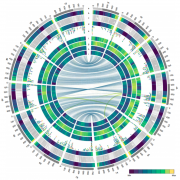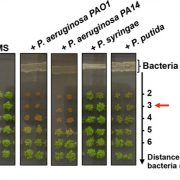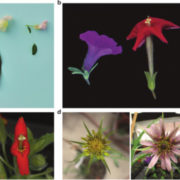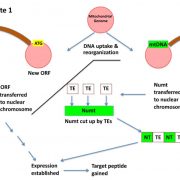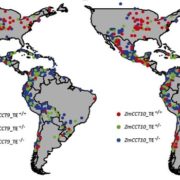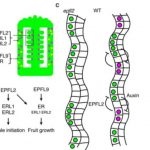Jasmonate-related MYC transcription factors are functionally conserved in Marchantia polymorpha ($) (Plant Cell)
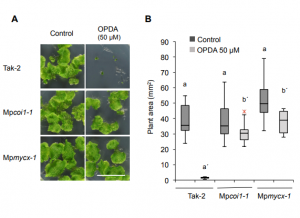 In recent years, studies in the model bryophyte Marchantia polymorpha have provided insights on how the Jasmonic Acid (JA) pathway works in early diverging land plants, starting from its biosynthesis (Yamamoto et al., 2015; Koeduka et al., 2015), followed by perception (Monte et al, 2018) and co-repressor (Monte et al, 2019), and now, the transcription factors involved in the downstream signaling. Marchantia possesses two homologs of AtMYC2, the master regulator in Arabidopsis: MpMYCX and MpMYCY, which are encoded in the X and Y chromosomes and expressed in the male and female gametophyte, respectively. Here, Peñuelas et al. show that the role of these homologs is conserved in Marchantia, including interactions with JAZ proteins, light stability, and phenotypic effects on dino-OPDA (the functional JA in Marchantia). The disruption of JA signaling pathways makes Marchantia plants more sensitive to herbivory, and mutants in Mpmycy accumulate a reduced amount of sesquiterpenoids in response to herbivory, which suggests that terpenoid biosynthesis could be a defense mechanism conserved also in Marchantia. Additionally, the authors found that there is no reciprocal inter-specific complementation of MYCs between Arabidopsis and Marchantia. This finding shows how hormone pathways could be conserved across embryophytes, but some protein-protein interactions would have changed along with evolution. (Summary by Facundo Romani) Plant Cell 10.1105/tpc.18.00974. See also In Brief by Phil Carella 10.1105/tpc.19.00600.
In recent years, studies in the model bryophyte Marchantia polymorpha have provided insights on how the Jasmonic Acid (JA) pathway works in early diverging land plants, starting from its biosynthesis (Yamamoto et al., 2015; Koeduka et al., 2015), followed by perception (Monte et al, 2018) and co-repressor (Monte et al, 2019), and now, the transcription factors involved in the downstream signaling. Marchantia possesses two homologs of AtMYC2, the master regulator in Arabidopsis: MpMYCX and MpMYCY, which are encoded in the X and Y chromosomes and expressed in the male and female gametophyte, respectively. Here, Peñuelas et al. show that the role of these homologs is conserved in Marchantia, including interactions with JAZ proteins, light stability, and phenotypic effects on dino-OPDA (the functional JA in Marchantia). The disruption of JA signaling pathways makes Marchantia plants more sensitive to herbivory, and mutants in Mpmycy accumulate a reduced amount of sesquiterpenoids in response to herbivory, which suggests that terpenoid biosynthesis could be a defense mechanism conserved also in Marchantia. Additionally, the authors found that there is no reciprocal inter-specific complementation of MYCs between Arabidopsis and Marchantia. This finding shows how hormone pathways could be conserved across embryophytes, but some protein-protein interactions would have changed along with evolution. (Summary by Facundo Romani) Plant Cell 10.1105/tpc.18.00974. See also In Brief by Phil Carella 10.1105/tpc.19.00600.



